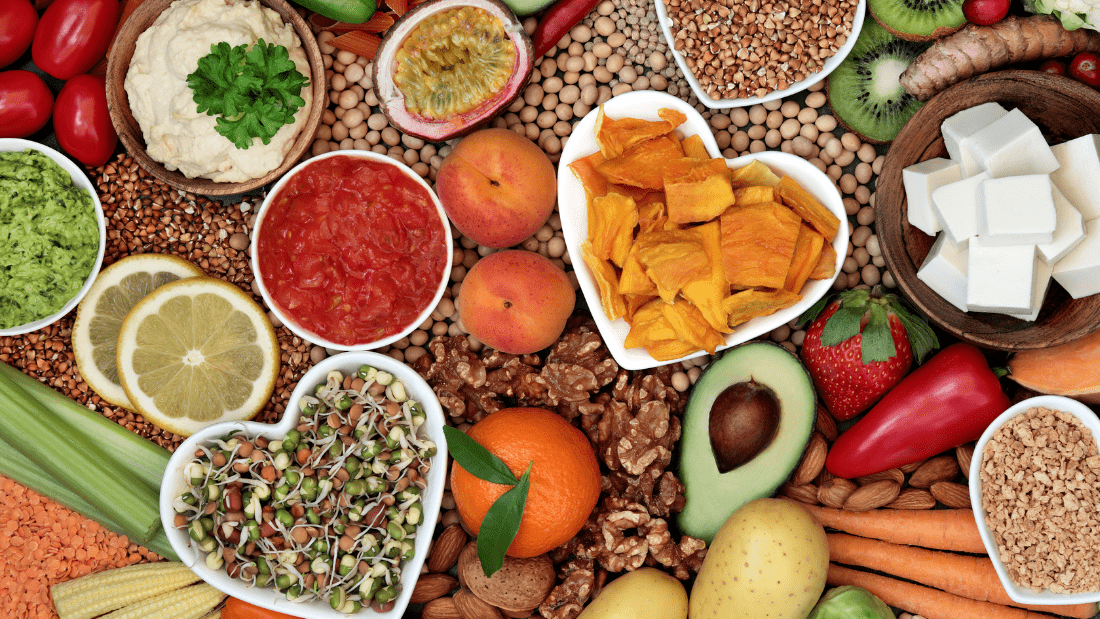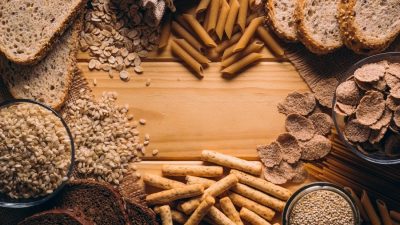Fibre – more important than you think!

You probably know about fibre: it’s the part of plant foods you can’t digest. It keeps your digestive system healthy, encourages ‘good’ gut bacteria and can help in healthy weight management. But that’s only part of the picture. Dietary fibre may also reduce the risk of heart disease, stroke, high blood pressure, diabetes, obesity, gastrointestinal disorders and bowel cancer. It may even improve immune function. Fibre, it turns out, may have profound effects on our health and we are only just realising how important it is.
A study published in The Lancet in 2019, pooling the results from 243 studies, found a very strong relationship between high fibre intakes and better health outcomes. They found that 25 grams or more of fibre a day was linked to lower weight, blood pressure, blood sugars and cholesterol and a lower risk of developing (or dying from) diabetes, heart disease, strokes and breast or bowel cancer. They said that intakes in the range of 25-29 grams daily are adequate, but suggested that amounts greater than 30 grams a day confer even more benefits.
How much do you need?
UK guidelines recommend 30 grams of fibre a day, but government surveys show that, on average, we are only eating around 19 grams. The popularity of low-carb diets, like the Paleo, ketogenic and Atkins diets, has not helped as animal foods – meat, fish, eggs and dairy – contain no fibre whatsoever.
Different types of fibre
There are different types of fibre, all offering health benefits. Soluble fibre dissolves in water to form a gel, which makes you feel full for longer and makes stools soft and easier to pass. It slows the body’s absorption of glucose from food and so reduces blood sugar spikes which, over time, can increase the risk of diabetes. The best sources are wholegrains, pulses (eg peas, beans and lentils), bananas, berries, apples, pears, sweet potato, carrots and other root vegetables.
Insoluble fibre is tougher and does not dissolve but absorbs water, increasing stool bulk and helping to keep you regular by speeding the passage of food and waste through your gut. It can help prevent constipation, diverticulitis and irritable bowel syndrome (IBS). However, people with IBS symptoms are sometimes advised to limit insoluble fibre (skins and stalks etc) in preference for the more gentle soluble fibre found in oats, for example. The best sources are wholegrains, breakfast cereals, unpeeled fruit and dried fruits, vegetables, nuts and seeds.
Some nutritional scientists argue that the terms soluble and insoluble are outdated suggesting that fibre should be recategorized as: viscous, bulking or fermentable. Broadly speaking, viscous refers to soluble fibres and bulking to insoluble. Fermentable fibre includes resistant starch, sometimes called the third type of dietary fibre. It resists digestion in the small intestine and is fermented further down in the large intestine by gut bacteria. These ‘good bacteria’ generate short-chain fatty acids and other substances that protect health and may lower the risk of bowel cancer. Good sources include: plantain (sometimes called green or cooking bananas), wholegrains – including oats and barley, pulses and cooked and cooled rice, for example, as used in sushi.
Most plant foods contain a mixture of all these types of fibre. What is important to remember is that they all offer health benefits. So, try to eat a wide variety of fruit and vegetables, wholegrains, pulses, nuts and seeds. You don’t need expensive supplements or fancy foods. A varied vegan diet rich in unprocessed plant foods will provide plenty.
The power of fruit and vegetables
The 5-A-Day campaign was based on the World Health Organisation’s recommendation to eat a minimum of 400 grams of fruit and vegetables a day to lower the risk of serious health problems, such as heart disease, stroke and some types of cancer. A study led by scientists from Imperial College London, looking at 95 studies on fruit and vegetables, found that although the recommended five a day reduced disease risk, the greatest benefit came from eating 800 grams a day (around 10 portions – one portion is 80 grams). Ten portions a day was associated with 24 per cent reduced risk of heart disease, 33 per cent reduced risk of stroke, 13 per cent reduced risk of cancer and 31 per cent reduction in premature death.
Wholegrains, pulses, nuts and seeds
Wholemeal bread, brown rice, wholewheat pasta, high-fibre breakfast cereals and oats contain much more fibre than white bread and pasta. A 180 gram portion of cooked white fusilli pasta, for example, contains just 3.3 grams of fibre compared to 7.0 grams in wholewheat fusilli. Pulses such as peas, chickpeas, kidney beans and lentils are all great sources of fibre too. A 50 gram portion of hummus contains three grams – make dips, dahl and add them to soups, stews, salads and pasta dishes. Nuts, such as almonds, pecans and walnuts, provide plenty of fibre, as do pumpkin, sesame and sunflower seeds.
Trick and tips
There are some tricks you can use to boost your intake. If you start the day with cereal or muesli, add a sliced banana, a handful of berries or chopped nuts. If you make homemade smoothies, add a small handful of almonds or a spoonful of ground flaxseed. A quick lunch of beans on toast can supply 15 grams of fibre – half the recommended daily intake – if you swap white bread for wholemeal (two slices supply 6.0 grams), half a can of baked beans (8.0 grams) and a generous sprinkle of nutritional yeast (1.0 gram). Eating fruit throughout the day will help; a banana and apple both supply 2.0 grams each. Swap processed snacks for oatcakes, vegetables sticks, dried fruit and nuts – a small handful of unsalted nuts provides around 3.0 grams of fibre.
Evening meals might include a cauliflower and chickpea curry with brown rice, brown lentil Bolognaise with wholewheat spaghetti or a jacket potato with hummus, beetroot and a mixed leaf salad. If you’re a pudding person, go for something with fruit; apple crumble made with raisins and an oaty topping, chop fruit into a vegan yoghurt or try a fresh fruit salad with dates and pistachios!
Variety is the key; if you eat a varied vegan diet with plenty of fruit, vegetables, wholegrain foods, pulses, nuts and seeds, you will get all the fibre you need!





